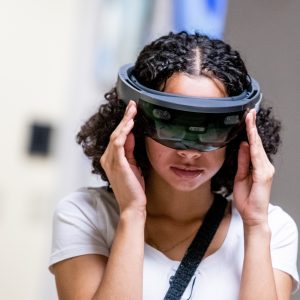
Visualizations
The GVIS Lab’s visualizations allow people to interact with science and environments in an interactive and intuitive way.
The Graphics and Visualization Lab applies advanced visualization technology and expertise to create innovative solutions for NASA and the scientific community.
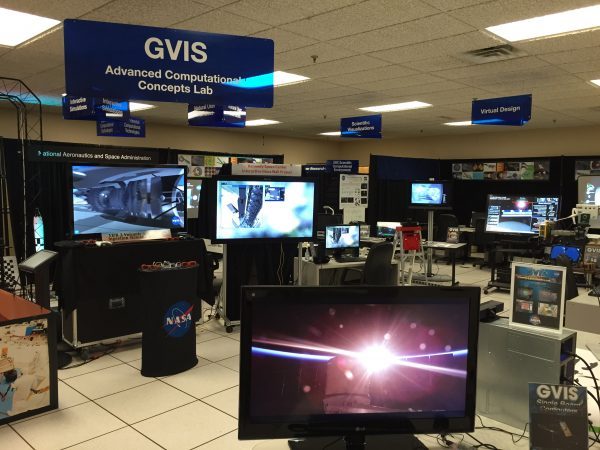
For over 30 years, the Graphics and Visualization Lab (GVIS) has been providing visualization support to each of the Glenn Research Center’s core competencies. We are a unique lab that develops graphic visualizations from data and models to provide researchers, scientists, engineers and others with a visual tool to develop solutions for their work.
Our team is part of the Scientific Computing and Visualization Team at Glenn which works to unite the worlds of visualization and scientific computing.
The lab is also part of a collection of “Creative Spaces” at Glenn. It is a facility whose doors are always open for NASA employees to stop by and discuss their needs and ideas, and also to experiment with the equipment.
One of the Lab’s main objectives is to work with scientists and engineers to produce custom graphics applications of their projects.
Within our varied projects, we specialize in:
The Lab supports the visualization of a wide variety of 3D data and models such as CAD, point clouds and volume data. We are capable of high-impact data visualization, web-based visualization, time-accurate data representation, and designing and testing CAD models in virtual reality.
The GVIS Lab also places an emphasis on education and outreach by educating the community through hands-on educational events at local schools, museums and organizations. By hosting tours of the lab and conducting presentations and events, the lab inspires the next generation of STEM-minded students.
Grid View List View

The GVIS Lab’s visualizations allow people to interact with science and environments in an interactive and intuitive way.
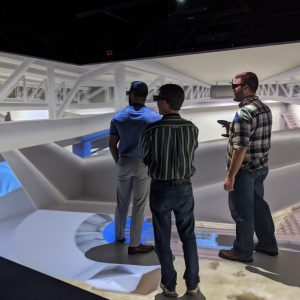
The GRUVE Lab provides a fully interactive virtual reality space in which to observe and analyze data and environments. GRUVE is a part of the Cave Automatic Virtual Environment (CAVE).
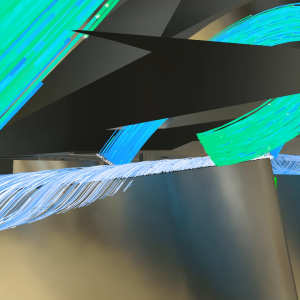
The GVIS Lab offers diverse visualization displays, solutions and services for all of NASA and the scientific community.
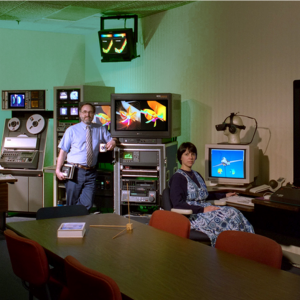
Since its creation in 1989, the GVIS Lab has had a storied visual and technological history.
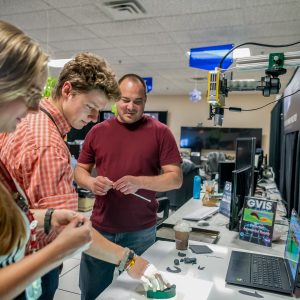
The GVIS Lab hosts several college and high school interns throughout the year, giving motivated students the chance to develop their skills while working on real-world NASA projects. Areas of work include 3D modeling, 2D graphic design, programming, virtual and augmented reality development, communications and more. Sophia Bricker, an intern at NASA’s Glenn Research Center … Read the rest ⇢
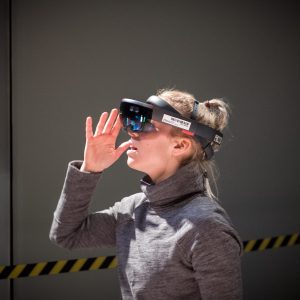
The Graphics & Visualization Lab, located at NASA’s Glenn Research Center in Ohio, uses advanced technology to design and develop software applications for various audiences. The team aims to inform children, adolescents and adults about advanced technology used to support employees at Glenn. The GVIS Lab uses Virtual Reality (VR) and Augmented Reality (AR). These technologies … Read the rest ⇢
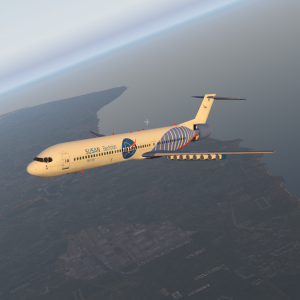 The SUSAN visualization, short for Subsonic Single Aft Engine, is a cutting-edge concept for a hybrid electric commercial jet aircraft. This innovative design incorporates a single aft jet engine,complemented by sixteen electric engines distributed among the two wings in a mailbox configuration. This experimental aircraft boasts NASA-designed electronic flight displays, which enhance its navigation and control capabilities. The aircraft features a distinctive T-tail configuration, which contributes to its aerodynamic efficiency. The primary objective of SUSAN is to significantly reduce fuel consumption during flight, aligning with NASA’s mission to promote more sustainable and eco-friendly aviation technologies. To learn more about SUSAN, click here!
The SUSAN visualization, short for Subsonic Single Aft Engine, is a cutting-edge concept for a hybrid electric commercial jet aircraft. This innovative design incorporates a single aft jet engine,complemented by sixteen electric engines distributed among the two wings in a mailbox configuration. This experimental aircraft boasts NASA-designed electronic flight displays, which enhance its navigation and control capabilities. The aircraft features a distinctive T-tail configuration, which contributes to its aerodynamic efficiency. The primary objective of SUSAN is to significantly reduce fuel consumption during flight, aligning with NASA’s mission to promote more sustainable and eco-friendly aviation technologies. To learn more about SUSAN, click here!
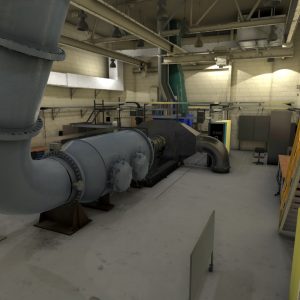 The W8 Facility Digital Twin was created to prototype a digital twin of the W8 Facility within the realm of virtual reality. This involved meticulously recreating the facility and its intricate hardware, using existing CAD models as the foundation. The culmination of this effort allows users to immerse themselves in the virtual environment and navigate through the facility. The virtual model boasts an augmented aspect: key pieces of geometry and hardware are adorned with informative call-outs, showcasing a range of data including temperature and pressure. These data points are derived from the actual tests, lending authenticity to the virtual experience. Through this, the primary objective was to unravel the intricate process of developing a virtual twin in the VR realm, while simultaneously pinpointing the array of challenges that lie within this innovative pursuit.
The W8 Facility Digital Twin was created to prototype a digital twin of the W8 Facility within the realm of virtual reality. This involved meticulously recreating the facility and its intricate hardware, using existing CAD models as the foundation. The culmination of this effort allows users to immerse themselves in the virtual environment and navigate through the facility. The virtual model boasts an augmented aspect: key pieces of geometry and hardware are adorned with informative call-outs, showcasing a range of data including temperature and pressure. These data points are derived from the actual tests, lending authenticity to the virtual experience. Through this, the primary objective was to unravel the intricate process of developing a virtual twin in the VR realm, while simultaneously pinpointing the array of challenges that lie within this innovative pursuit.
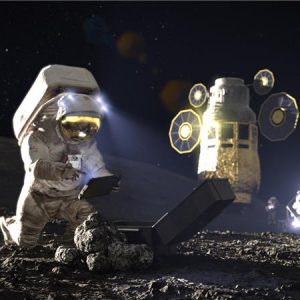 At NASA Glenn, an emulation environment within the MATRICS system is utilized to test cutting-edge technologies developed during the Lunar LTE Studies Project, or LunarLiTES. LunarLiTES aims to assess the applicability of 4G and 5G technologies in the lunar environment, with the ultimate goal of providing future lunar explorers with the same level of seamless communication they enjoy on Earth.
At NASA Glenn, an emulation environment within the MATRICS system is utilized to test cutting-edge technologies developed during the Lunar LTE Studies Project, or LunarLiTES. LunarLiTES aims to assess the applicability of 4G and 5G technologies in the lunar environment, with the ultimate goal of providing future lunar explorers with the same level of seamless communication they enjoy on Earth.
The LunarLiTES team is dedicated to enhancing the Multiple Asset Tested for Research of Innovative Communication Systems (MATRICS) emulation environment by introducing 4G and 5G capabilities. The specific objective is to analyze the performance of 4G and 5G communication systems on the lunar surface.
The lunar communications architecture animation not only showcases the Lunar LTE Studies project but also highlights the pivotal role played by SCaN’s team at NASA Glenn. The primary intention with this visualization is to educate and engage the public, shedding light on SCaN’s mission and its significant contributions within the NASA agency.
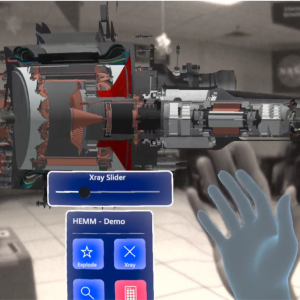 Developed within the realms of Unity 3D in C# and optimized for the Oculus Quest 2, this app is a gateway to augmented reality. By utilizing the device’s external cameras, it seamlessly blends the virtual and real worlds. With intuitive hand tracing and wireless freedom, even beginners can become proficient within minutes. The app’s mission is to democratize augmented reality, allowing users to experience 3D models and data visualizations affordably. This accessibility paves the way for widespread integration in education, capitalizing on the power of visual learning without being expensive.
Developed within the realms of Unity 3D in C# and optimized for the Oculus Quest 2, this app is a gateway to augmented reality. By utilizing the device’s external cameras, it seamlessly blends the virtual and real worlds. With intuitive hand tracing and wireless freedom, even beginners can become proficient within minutes. The app’s mission is to democratize augmented reality, allowing users to experience 3D models and data visualizations affordably. This accessibility paves the way for widespread integration in education, capitalizing on the power of visual learning without being expensive.
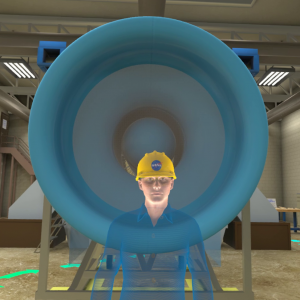 W-1A is NASA Glenn’s Low Speed Axial Compressor facility. This virtual reality experience allows the user to take an immersive and interactive tour of the facility as it is being used for recent work on jet engine casing treatments. Using a VR headset or the Cave Automated Virtual-Reality Environment (CAVE), the user can explore the facility’s environment, examine the engine and pick up objects to better inspect them in a seemingly realistic way. A video featuring the W-1A visualization can be seen on our YouTube channel.
W-1A is NASA Glenn’s Low Speed Axial Compressor facility. This virtual reality experience allows the user to take an immersive and interactive tour of the facility as it is being used for recent work on jet engine casing treatments. Using a VR headset or the Cave Automated Virtual-Reality Environment (CAVE), the user can explore the facility’s environment, examine the engine and pick up objects to better inspect them in a seemingly realistic way. A video featuring the W-1A visualization can be seen on our YouTube channel.
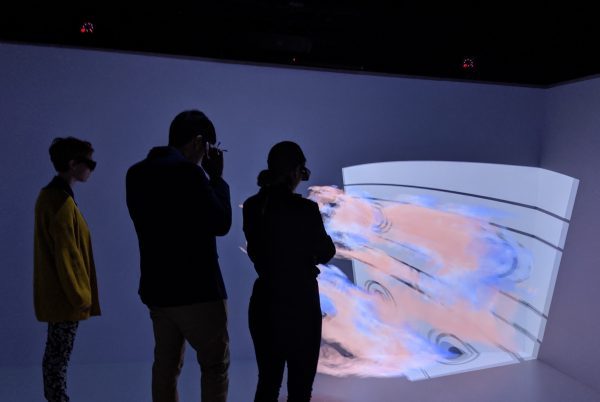
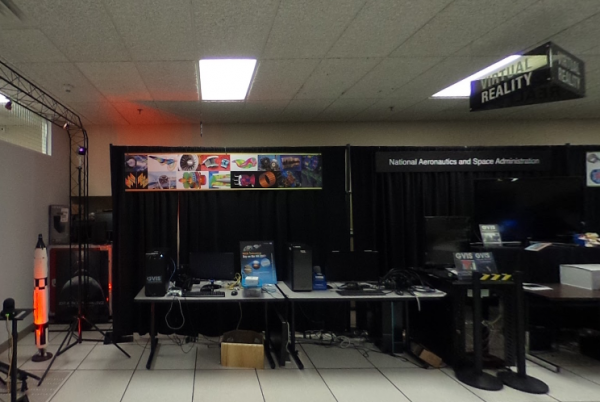
The Lab maintains a large collection of computing, visualization, and user interaction devices including:
All of these devices are available for employees to try and test for possible application to their work.
We support all six of the center’s core competencies and all four of NASA’s general mission directives, as well as the surrounding research community. If you are considering using our data visualization, 3D modeling, or other services, please contact us.
Need to reach us? You can directly send an email to the GVIS Team GRC-DL-GVIS@mail.nasa.gov or the Team Leader, Herb Schilling hschilling@nasa.gov
Like our content? Follow us on social media @nasa_gvis on Twitter and Instagram!